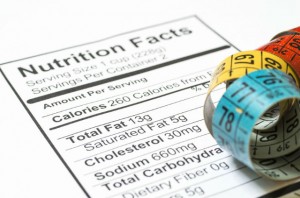
While half of Americans say they read the nutritional labels on packaged foods before buying, many don’t understand them – or, if they do, they aren’t really sure what to look for in order to make an informed choice.
Part of the problem may be that it requires a magnifying glass to read some labels, but another issue is the somewhat deceptive practice of food companies increasing the number of servings per package to lower the number of calories that appears. Many consumers look at the number and mistakenly assume it refers to the entire contents, which can add to the confusion.
Clearly, a change is needed. The Nutrition Facts label that was mandated by Congress in 1990, was meant to help Americans make better choices so that they would eat a more nutritious diet. The reasoning behind it was that if consumers saw the nutrients and calories in food, it might dissuade them from making less healthy choices and encourage them to eat foods with more nourishing ingredients.
Although labeling did work to reduce extremely harmful trans fats, which have disappeared from many processed foods, the problem is, that it didn’t work so well when it comes to toxic ingredients like artificial colors and preserves, high fructose corn syrup or other sugary substances disguised with a variety of names. Manufacturers often add synthetic vitamins and minerals to make a product seem healthier than it really is.
Dr. David Kessler, the commissioner of the FDA who championed the development of the current label, told the New York Times, “Although the numbers can look good, the product may not be real food and have no nutritional value.”
The publication also points out that another big issue is that the people who are most likely to read food labels are health-conscious already, the audience for which it is less necessary to do so.
The good news is that the FDA is said to be planning a revision, though it is likely to be quite some time before the revised labels show up on store shelves. Thousands of public comments must be reviewed, then final rules issued and the food industry given time to implement them.
Some of the possible changes, the Times reports, include separately listing added sugars to distinguish them from sugars that are naturally present, such as in fruit. It would also highlight the number of calories that most people consume at a sitting. For example most people would probably drink the entire 12-ounce can of soda, not the eight ounces the label currently indicates. The new label would reveal the amount of calories in the entire can instead.
 The changes are a step in the right direction, but most feel they aren’t nearly enough to make a significant difference. In Ecuador, food packages use traffic light signals to highlight good, bad or neutral foods as far as their nutritional content. Of course, the American food industry fights changes like these because they result in lower sales.
The changes are a step in the right direction, but most feel they aren’t nearly enough to make a significant difference. In Ecuador, food packages use traffic light signals to highlight good, bad or neutral foods as far as their nutritional content. Of course, the American food industry fights changes like these because they result in lower sales.
So what can you do if you want to make an informed choice without having to wait years, or even decades for real change to take place?
It’s really not all that complicated. Anyone can make a healthy food purchase just by reading the ingredients and determining what’s really inside that package. One good indication that it’s not a good choice, is if it has a long list of ingredients that you can’t understand what they are and/or where they come from.
Keep in mind that fresh, organic foods that come from the earth have no deceptive ingredients to worry about.
-The Alternative Daily

